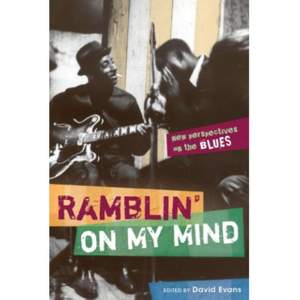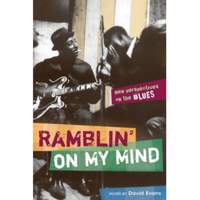Ramblin' on My Mind: New Perspectives on the Blues
- Editor: Evans, David
[An] illuminating volume. . . . Recommended to all blues fans —
Book
$120.00Contents
- Contents
- Introduction David Evans 1 Bourdon, Blue Notes, and Pentatonism in the Blues: An Africanist Perspective Gerhard Kubik 2 "They Cert'ly Sound Good to Me": Sheet Music, Southern Vaudeville, and the Commercial Ascendancy of the Blues Lynn Abbott and Doug Sero
- Index Ramblin' on My Mind
- Introduction David Evans The years since the late 1950s have seen a dramatic growth in scholarly and popular literature about blues music. Blues was certainly mentioned in print before this time, but previous writers had almost universally viewed it as ei
- Chapter 2 , an essay that should cause a revision in the prevailing view of blues prior to 1920, the year in which the first commercial blues recordings by black singers were made. Until recently our view of this era has been influenced by the reports of
- Chapter 3 a different view of W. C. Handy by focusing on Handy's friend, advisor, and collaborator Abbe Niles. Just as Handy played an important early role in giving the blues an appeal to white American and international audiences, Niles played a parall
- Chapter 5 ) surveys a large sample of over three thousand blues artists, more than six times as large as any previous sample. It considers all artists who recorded blues between 1920 and 1970, the genre's peak years of development as an African American a
- Chapter 7 , showing how Johnson combined them to produce a work of great complexity and creativity. While we may never know Johnson's ultimate intentions with respect to this or any other piece nor all of the forces that impelled his apparently tormented
- Chapter 8 . The singer makes this song interesting by her use of the device of "quotation," that is, the interpolation of bits and pieces of this and other songs as performed and recorded by other singers. In using this device, Fitzgerald reveals many inf
- Chapter 10 , folklorist John Minton has combined fieldwork with a study of recordings and literature to explore the origins of a regional and ethnic derivative of blues called zydeco, a style prevalent among musicians of Louisiana Creole background. In th




